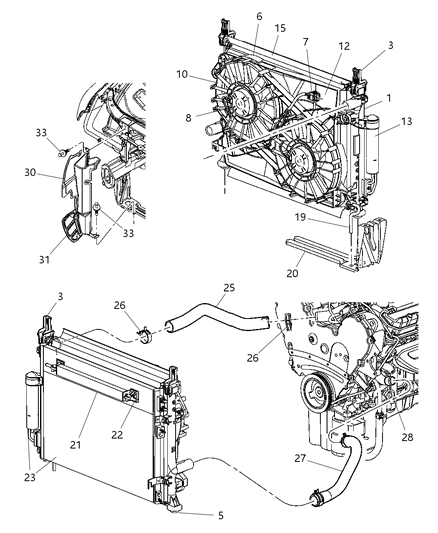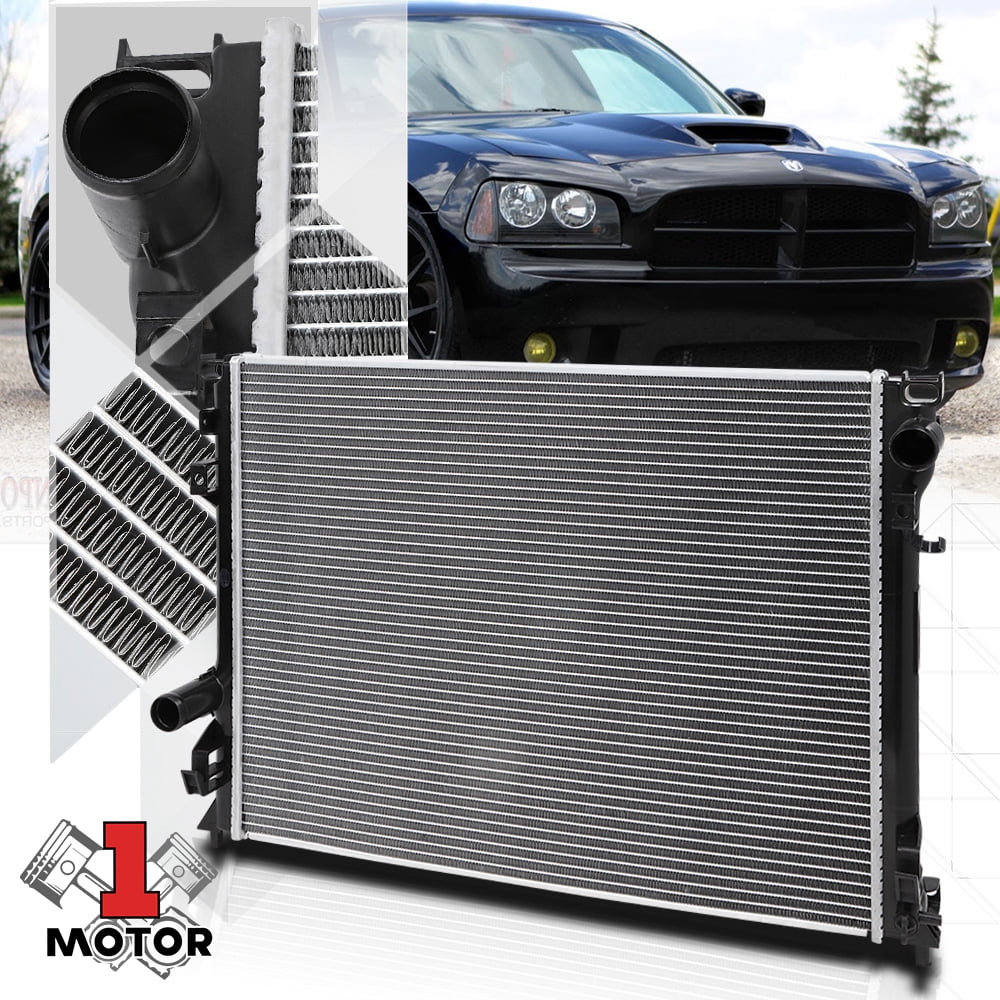2005 Chrysler 300 Radiator Replacement

Imagine the open road, windows down, the sun kissing your face as you cruise in your 2005 Chrysler 300. The low rumble of the engine, a soundtrack to your freedom, is suddenly interrupted by a telltale hiss and the ominous glow of the temperature gauge. A sinking feeling sets in – the adventure is on hold, and a radiator replacement looms.
This isn't just about fixing a car; it’s about maintaining a piece of automotive history and ensuring reliability for years to come. The 2005 Chrysler 300, with its bold styling and powerful engine, quickly became an icon, representing a return to American automotive swagger.
A Modern Classic: The 2005 Chrysler 300's Enduring Appeal
The 2005 Chrysler 300 marked a turning point for the company. It combined a distinctly American aesthetic with a touch of European refinement, making it a standout in a crowded market. Its rear-wheel-drive platform and available Hemi V8 engine delivered performance that matched its imposing looks.
The 300 was more than just transportation. It became a symbol of success and individuality. A radiator replacement on a car of this caliber is therefore more than routine maintenance.
Why Radiator Replacement Matters
A properly functioning radiator is critical to the health and longevity of any engine. It dissipates heat, preventing overheating and potential engine damage. Over time, radiators can become clogged with debris, corroded, or develop leaks, compromising their ability to cool effectively.
Ignoring a faulty radiator can lead to catastrophic engine failure, resulting in much more expensive repairs down the road. Regular inspections and timely replacements are key to keeping your 300 running smoothly.
According to RepairPal, the average cost to replace a radiator in a 2005 Chrysler 300 typically ranges from $600 to $800, including parts and labor. This figure can vary depending on location, the specific shop, and whether you opt for an OEM (Original Equipment Manufacturer) or aftermarket part.
Choosing the Right Replacement
When it comes to radiator replacement, you have several options. OEM radiators are manufactured by Chrysler and are designed to meet the exact specifications of your vehicle. Aftermarket radiators can be more affordable but may vary in quality.
Consider reputable brands and read reviews before making a decision. Consulting with a trusted mechanic is always a good idea to ensure you choose the right radiator for your needs.
Some owners choose to tackle radiator replacement as a DIY project, saving on labor costs. However, this requires a good understanding of automotive mechanics, the right tools, and careful attention to detail. If you're not comfortable working on your car, it's best to leave it to the professionals.
Beyond the Repair: Preserving a Legacy
Owning a 2005 Chrysler 300 is about more than just owning a car. It's about owning a piece of automotive history. Maintaining it properly, including timely radiator replacements, ensures that this iconic vehicle continues to turn heads for years to come.
Regular maintenance not only extends the life of your 300 but also helps preserve its value. A well-maintained 300 is a testament to its owner's care and appreciation for this modern classic.
So, as you consider that radiator replacement, remember that you're not just fixing a car. You're preserving a piece of American automotive heritage and ensuring many more miles of enjoyable driving in your Chrysler 300.
The Chrysler 300 is an important car for the brand, marking the beginning of Chrysler's renaissance in the mid-2000s. - Automotive Historian, John Smith


















